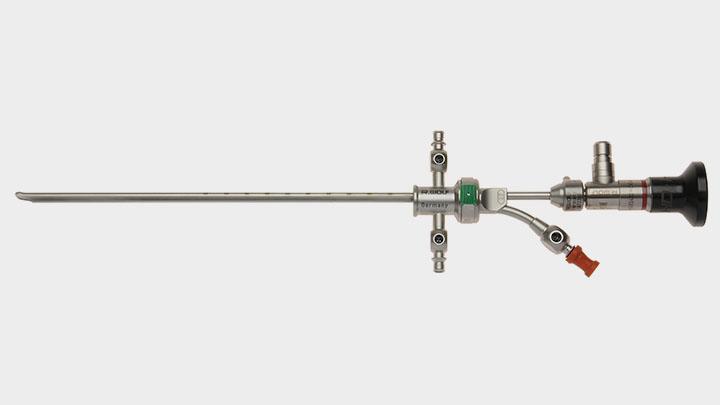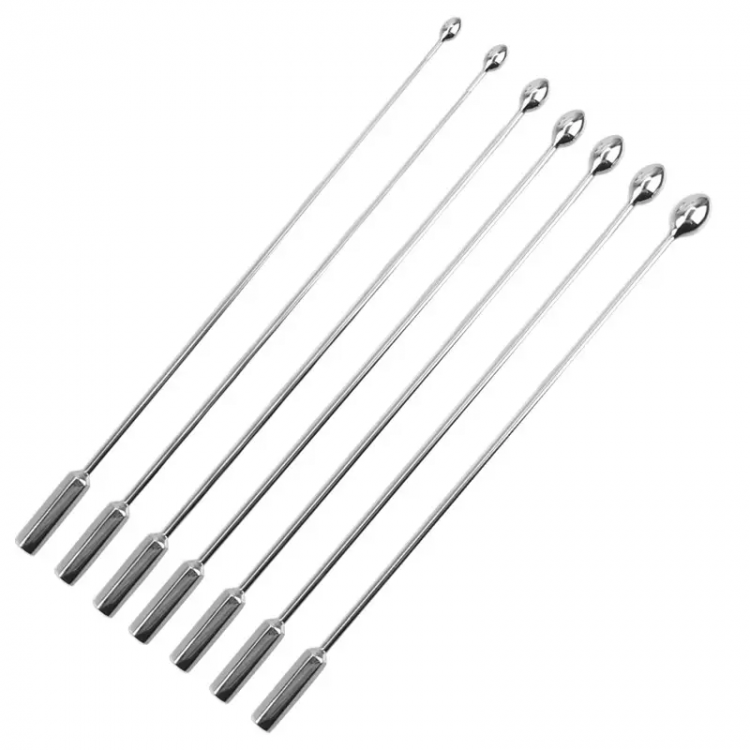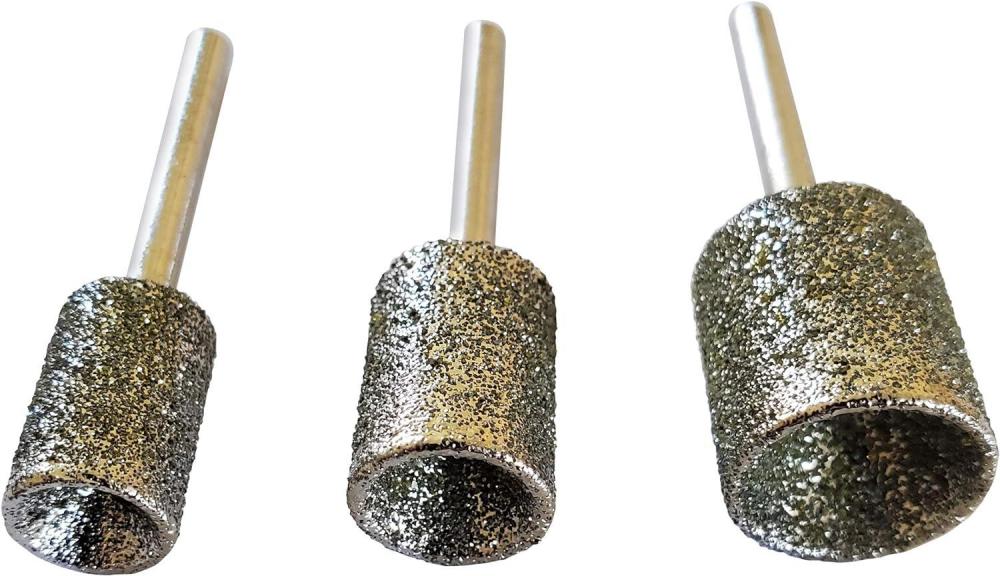 |
 |
-
Posts
69 -
Joined
-
Last visited
Content Type
Profiles
Forums
Gallery
Articles
Store
Everything posted by boyhood
-
I don't think that was necessary Spargano, though it's commendable that you were able to reduce it by 9 pages. But it unfortunately now renders the late history of the thread unreadable. A mod would have likely been able to move certain sections into separate threads but it looks like you don't mind starting fresh... Your trials and errors are often helpful to readers, but the point is to make this history more accessible and organized, not less. It was hard enough keeping that history intact from the backup I had made shortly before the forum crash. Either way, it wasn't right for me to use you as an example when so many in here, myself included, have in phases hijacked cathdiap's personal thread, essentially making it our home. I'm going to make a wild guess that cathdiap didn't know his topic would reach the 75 page mark when he created it. If so, I think we can all agree this is in recognition of the subject's growing popularity and need for a bigger home, a home that isn't tied to a single poster, but everyone's contributions. Especially a home that doesn't give the OP gray hairs or feel a sense of responsibility. This is exactly right. It would be very valuable to have some of our stenting veterans nail down some bullet points of different threads about safe practices, what not to do, FAQs like a thread for anyone to post their own questions, and even some guides on materials and strategies to have better access to that information for the newcomers than expecting them to spend days trying to sift through 75 pages of conversation because 9/10 times that ain't gonna work. Those who have been here from the beginning know the same questions have been asked at least 100 times. There's better ways to help ensure safety is always a priority, because this practice is not going to fade away. The information needs to be accessible, why I proposed a separate sub-forum (e.g. "Experiments"), or at the very least clean up the current "IC Desires" sub-forum with some stickied information for those interested in learning about this art (and I can call it that). Everyone in here brings something unique to the table so I'm sure a few of us here would be willing to work together to help participate in some of those threads, and if we want, create our own personal threads. As for this thread, I agree with everyone else here than the OP, it should be saved in the history books, stickied for legacy reasons, and if needed, memorialized with a lock switch, but NOT deleted. Thanks cathdiap for all of your contributions to date, you've allowed us a platform to discuss safe and helpful practices. I ask that you do not retire from this forum, but rather help to make the information you've acquired within reach especially for newcomers.
-
cathdiap, if you recall, we touched on this subject of how much you are to personally blame when Spargano first started his experimentation and posted those photos (that nobody wants to remember). The above was my response and I stand by it. To top it off, the very first couple lines of the OP titled "My experience with stents" show a disclaimer that cannot be missed: As I'm sure many in here can attest, it was due to this thread specifically why we even registered to this forum. This Thread quickly became its "own Board" on the Forum and probably should have been a Sub-Forum to begin with, evident by the fact that This Thread has remained the most popular thread on the "Incontinent Desires" board since its inception. That is because people started using it for their own purpose, cathdiap. Sorry to say, but just because you started this thread does not mean you are the founder of urethral stenting. Stop taking blame in any way shape or form from other people's dumbass mistakes that they are clearly taking themselves accountable for, which means they are taking accountability, signifying personal ownership of their choices and behaviors. This has nothing to do with you, cathdiap, be rest assured. But honestly, part of me wouldn't even mind if this thread did get locked because it has become too big. Especially as of late, it has become extremely difficult to keep up with this thread that I used to love so much. Now it's a 75-page mammoth, large in part to newer contributors like Spargano who apparently feel the need to publicly document in essay form "every single adjustment" they make, and more accurately "every single thought" they have. This thread has been hijacked and should never have become everyone's diary. In that respect, I totally understand where cathdiap is coming from and do agree that something should be done. A proposal to the moderators would be to create another sub-forum for "Experiments" that includes its own disclaimer that people are responsible for their actions. That way we could keep everyone's thread on their own personal experimentation to themselves and avoid this level of disorganization. As for cathdiap, we don't just delete history or tear down statues, but in this thread's case (being the grandfather of all threads on stenting) should be moved to the new Experiments sub-forum, be stickied, and then locked. I'm ready to move forward with a new structure and think this should have been done a long time ago.
-
I am going to have to agree on every front spoken on in these last two messages. Reddy, I have followed your entire journey here and carefully read every post. I ask that you listen to the feedback here and consider every point discussed before trying to rationalize something that has such broader consequences on your future life. You are young, and I truthfully believe this additional surgery would kill you in the end because you hadn't fully considered the impact it would have on your life and everyone around you. Surprisingly you had recently admitted the same about "not having considered the consequences" of this first surgery but this new fascination is an entirely different ballgame. I'm really beginning to believe you have a death wish. This thread has turned from interesting and somewhat admirable in ways to outlandish and dangerous. I don't even want to be a part of this thread anymore. It's gotten out of control. You've only touched the surface on what type of embarrassment, social isolation, and a drastically reduced quality of life would occur if you proceeded with getting your anal sphincter cut. It doesn't even appear you've put any thoughts into side effects that would most certainly occur like rectal prolapse—where the intestines protrude through the anus. Yes, it would most definitely happen to you and it poses serious health risks far beyond pain, such as infection, continuous hospitalization and likely in the end, death. Before considering any surgical procedures that may lead to any further life-altering consequences, it is essential for you to thoroughly evaluate the potential psychological, emotional, and physical impacts, as well as exploring less invasive alternatives with qualified mental healthcare professionals; you have a lot of life left and your well-being deserves careful consideration and should not be jeopardized by hasty decisions. Lastly, stop taking advice from the mindless Internet trolls aiding you on to fulfill a destiny that will by all estimations have the opposite effect on your life than you hoped and dreamed. I advise you start immediately by taking BrownBobby's (et al.) advice and seek a skilled psychiatrist now if you truly value your life, which I can only hope you do. Based on everything you've disclosed, I can confidently say you're already overdue and not going to get the kind of support you need on an Internet forum like this. If you don't take this advice, I am sorry to say that this is likely to go downhill for you very quickly. Saying all of this because I care about you, your life, and wellbeing. Good luck.
-
So what are you going to to disclose to them? Have they ever caught you with a diaper or anything diaper-related growing up? How is your relationship with them, are you close and visit often? Do you stay overnight with them and do any fun things with them? It will be difficult but I think extremely important for your psyche to get this past you. Be prepared for the natural reaction of a parent to be concerned of their child. The more truthful you are able to be with them, the more likely you are going to feel this weight lifted off your shoulders.
-

My Journey to becoming a nightly sheet soaker
boyhood replied to SoakedSheets's topic in Incontinent-Desires
Great point, I think it would be hard to lump every single night into just a few categories. There are so many states of Consciousness that it is quite unreal. A 0-10 scale may also be easier to understand and much more trustworthy. Cases of 0 would be absolutely no recollection and most appropriate for legitimate accidents "without" a diaper. Best examples are cases like this by SoakedSheets: "One other incident happened where I fell asleep on the unprotected sofa during the day in just pants and underwear 😰. Got up about 2 hours after falling asleep to a soaked sofa." Cases of 1 would be any absolute non-recollection of sleep wetting while wearing a diaper. Cases of 2-9 would be any scale of awareness that may have taken place, even if half asleep or possibly forgotten: - If fallen asleep during the void, a rating of 2-5 may be appropriate. - If half asleep during the whole void, a rating of 5-9 may be appropriate. Cases of 10 are intentional voids of complete consciousness from start to finish. Could you (OP et al.) please adapt this scale? It would add a lot of clarity and likely help you in your training. -
Just thought it might be helpful to mention that anyone interested in obtaining the inner tubing does not need to go out and buy spray bottles. All it uses is PTFE, also known as Teflon, and it comes in virtually any inner/outer diameter and wall thickness imaginable. Here was a post I made last December: Also regarding the nighttime draining problem, this is what ultimately stopped me from stenting since bedwetting was my ultimate goal. I don't think the problem is that your stent is kinking while laying down Spargano. The urethra is actually quite flexible. I came to the conclusion that after about 23 designs - several of which never migrated and performed perfectly during the day - that a stent even made it actually harder to wet while laying down than without one. It helped me reenforce the understanding that a wide open gateway that a stent provides is not all that is required in the process of urination. There needs to be either gravity or detrusor muscle contraction taking place. Movement such as breathing was not enough to expel urine in my experience (though this seemed to work for cathdiap). Even if it had, (and I tried just about every strategy and sleeping position) little squirts nonstop is such a different experience than what a true bedwetter experiences so I doubt I'd ever be completely satisfied sleeping with a stent. These days I have more luck with focusing on the mental aspect. Hypnosis helps as well. Eliminating the concerns and remembering it is safe to pee whenever lying in bed, and reenforce that behavior as if it were no different than a toilet. The result is much more natural and satisfying IMO.
-
This might sound crude but I just use a bag clip that has a soft and flat surface area, works well and can be comfortably worn for up to 30m or more. https://www.amazon.com/OXO-Grips-Collection-All-Purpose-Orange/dp/B09KFZN5RG When stented, I use these between drying off from the shower until my 1st diaper change.
-

My Journey to becoming a nightly sheet soaker
boyhood replied to SoakedSheets's topic in Incontinent-Desires
This is amazing that you've been able to find that much success in only about 17 months!... Inspirational actually! I've worn diapers to bed most nights for over a decade and cannot say with certainty that I've had an accident more than 5 times total. The number could be higher as it's sometimes hard to tell since I usually go to bed pretty wet after getting them on late afternoon-to-evening. But that goes to show that physical conditioning only goes so far in a habitual sense-- the art of bedwetting is purely mental. I know it sounds a little cliche, but the training will only be a success if your mind allows. This first point above is without doubt the best advice I have read for helping people accomplish true bedwetting. There is no better way to train your mind than to make the bed your toilet. If I get deep enough into this training, which I am going to give it a shot, I still have the concern of the nights I sleep at my family or friend's house. Any chance I can train myself to only wet the bed if they are Spider-Man sheets while holding a teddy bear? 😂 As ideal as that'd be, it's not realistic since it's impossible to know the difference in a deep sleep... so it sounds like the choice must be made if I can convince my mind to go to the point of no return... Bedwetter or not... here I come! -

Alternate methods or surgeries to achieve incontinence
boyhood replied to Squeaky Bearsies's topic in Incontinent-Desires
I have used catheters in the past (up to 24fr) but don't know how long it would take, even with the 30fr, to achieve enough urethral / sphincter stretching to cause temporary incontinence. It's something I'm not too interested in since catheters and diapers are not a good mix as they provide a full portal for bacteria to enter the bladder, highly increasing the risk of UTIs. I was also thinking that would be interesting to get the take from that clinic on the nerve surgery. Let us know what you find out if you do contact them! -

Alternate methods or surgeries to achieve incontinence
boyhood replied to Squeaky Bearsies's topic in Incontinent-Desires
Thanks for looking more into this idea as it is quite intriguing. I am with you that I think the nerve would branch to a few different regions. Cannot attest to which branches are responsible for which actions in the human body but I would imagine there is a right spot that it could be cut to achieve the results many of us desire. This will take a bit more research. Will look forward to hearing if anyone finds anything. -

Alternate methods or surgeries to achieve incontinence
boyhood replied to Squeaky Bearsies's topic in Incontinent-Desires
In the other thread, I wrote about this above possibility of having a surgeon simply sever a nerve to achieve incontinence. If the Pudendal nerve (which allows us control of our external sphincter) alone was cut, I see no reason they'd ever need to mess with the sphincters, muscle, or prostate at all. It also sounds like a much less invasive surgery with likely little-to-no recovery time. Optionally the Hypogastric nerve keeps the internal sphincter contracted so depending on your desired level of incontinence, I see no reason one or both of these could just be severed. Thoughts on this? -
Can't wait to hear the update! I imagine you both are cathed for a short while as you recover... Was the surgeon "extra aggressive" like you asked this time? How did everything go?
-
Just my 2 cents but I see 2 potential issues. 1) It has to be smooth to the touch from tip to tip. The silicone end cover looks rigid and will likely be irritating. 2) The bends are not very pronounced, so I'd be surprised if you don't experience issues with migration. That's all the constructive feedback I can gather from your one pic. Let us know your results if you ever tested it.
-
Reddy, Just curious, do you feel a different age than your real age? A better way to ask is, do you experiment with regression or ageplay? If so, which age do you feel like or find yourself most comfortable? Also, do diapers make you feel a different age? Last, do you have any clothing, pajamas, or even attachment objects like a teddy bear? Trying to better understand what it is about diapers that you enjoy most.
-
You'd think there would be some alternative strategies to induce different forms of incontinence,wouldn't you... I know you are still talking about cutting the sphincters directly, but what if that's not even necessary? Let's talk nerves. People get nerve damage below the waist fairly often that result in incontinence, so it's an interesting question as to why surgeons aren't able to simply sever the nerves responsible to reproduce the same effect. It's also a lot less intrusive if you think about it... Digging deeper, here are the nerves responsible for different processes of urination: 1) Pudendal Nerve: This nerve controls the muscles of the pelvic floor and the external urethral sphincter. It plays a key role in the voluntary control of urination. 2) Pelvic Nerves: These nerves are responsible for conveying the sensation of the bladder being full to the brain and triggering the reflex that initiates urination. They stimulate the detrusor muscle of the bladder to contract, leading to the expulsion of urine. 3) Hypogastric Nerve: This nerve helps in controlling the internal urethral sphincter. During the storage phase, it helps to keep the internal sphincter contracted, thus preventing involuntary leakage of urine. 4) Sacral Nerves (S2-S4): These nerves are crucial for the reflexes that empty the bladder. They contribute to both the sensation and the motor control necessary for effective urination. When it comes to the loss of continence, typically the following nerves can be involved: 1) Pudendal Nerve: Damage to this nerve can impair control over the external sphincter, leading to stress urinary incontinence. 2) Sacral Nerves: Damage to these nerves, which can occur due to surgery, trauma, or conditions like diabetes, can lead to issues like neurogenic bladder, affecting the ability to start urination or completely empty the bladder. 3) Pelvic Nerves: Damage here can affect the sensation of bladder fullness and disrupt the normal reflexes needed for urination, leading to overflow incontinence. These nerve damages usually are a result of surgical interventions, traumatic injuries, or neurological diseases. What if we could just pick and choose our preferred level of incontinence by mix-matching 1 or 2 of the nerves responsible?
-
Spargano, that image of the aftermath of your experience is... horrific to say the least and I'm actually pretty surprised you shared it here. I know you're just looking for some advice but you should know the design and execution was an absolute failure since it looks like something out of a crime scene. A description would do in this case. However, I suppose the only positive thing I can say is this serves as a reminder that this activity does not come without risks. Stent building is not all unicorns and rainbows, but it should absolutely not be attempted before better educating yourself and having a substantial level of experience with catheters. This thread alone has more resources to teach you the rights and wrongs than you should ever need to perform this process safer than you have. I encourage you to go through and carefully read every page of this thread, in addition to the PDF archive we have provided in the OP that provides hundreds of more examples of experiences from stent users before the forum crash. As an aside to Cathdiap, no one here would ever (or is) blaming you for sharing your method with stents. It's even in the title ("My experiences with stents"). Just like everyone in here, we each take full responsibility for our actions and our stent builds. If anything, you have (along with the entire community) helped promote safe practices in stenting and have without a doubt saved dozens of people from having bad experiences and less than ideal outcomes. A couple of things are also for sure, deleting this thread will not stop people from building them, and we've definitely had bigger horror stories than a rogue and bloody design. Best we can do is continue to support those people and emphasize safe practices and education in the art of stent building. Spargano, I can only give you my opinion as it's somewhat unclear with the number of things that went wrong with your design but to me it looks quite massive. I'd also make a less-than wild prediction that your design is not smooth from tip to base. It's also evident your insertion methodology was far too aggressive, likely due to inexperience and a lack of reading the do's and don'ts that have been reiterated here countless times. Lube shouldn't even be necessary at all if you know what you're doing which you clearly don't. My advice is to read this entire thread closely and don't be impatient when educating yourself. If you can manage that I'm sure next time you will have much better luck.
-
Sorry if this was mentioned earlier on in the thread Reddy but I'm curious to hear if you told your folks about the surgery? Do they know that you are diaper (or in this case catheter) dependent right now or were you able to (or intend to) hide that from them and your friends? So you have managed to just wear regular clothes with no risk of leaking right now? Sending best wishes your way and hoping the cath opens things back up for you.
-
This looks like a solid design. I think I recall you talking about the process before so don't mind me asking but: 1) How do you fit those balls past the meatus? Have you had a meatotomy? 2) What is the diameter of the balls, just so we can understand the french-sized equivalent? 3) Did you use PVC for the tubing molded directly vs using Teflon inner tubing? What material are the balls? Are they squishy? 4) How are the balls securely fastened with no risk of popping off? With an uncut meatus, I would imagine that's next to impossible to pass, am I wrong? It looks like a great design if able to be inserted. Shortening the bottom bend a couple of centimeters was probably a smart thing on your new update. That thing looks 100% migration-proof so kudos!
-
Have you been missing diapers since the surgery? Did you open your new packages thinking about your future dependence on them soon? Also, just curious if you have already taken care of pubic hair removal via laser or electrolysis? Can't wait to hear your updates!
-
It looks extremely long, do you have the measurements? Also am seeing many sharp edges present on the adjoining pieces which would account for the bleeding. Everything must be smooth to the touch or there will be irritation inside of the urethra.
-
Good luck! Excited to hear the updates, and hope the recovery goes well for you. I imagine there will likely be some pain for a while before you heal, but I'm sure you are prepared for that. Keep us posted and enjoy the journey!
-
It's been 1.5 years since I've tried a stent but I recently tried a new design inspired by Cathdiap's. It locks right into place and I had it in for a little over 48 hrs. Here are a few pics (pardon the dry hands-- this winter has been cold!) I've been using a diamond-coated animal nail grinder in my Dremel to accomplish the rounded edges on the silicone: Like all of the 20+ designs I've tried, it works flawless during the day but not very well lying down. Perhaps it is just my physique but in my experience my urethra flattens out almost entirely when lying flat due to the ~90° bottom bend which I've found promotes inward migration. I guess this shouldn't really come as much of a surprise as seeing a straight urethral sound or straight urethroscope (like the below) can technically be inserted all the way into the bladder... meaning the urethra is super flexible: So again I'm back to the drawing board. The longest I've gone with a design in was 2 weeks with a former O-Ring design modeled after dlnoir's design. No solution has perfectly satisfied all the criteria that I have sought: Easy insertion and removal past the meatus (Cathdiap's is an example, O-Rings are not) Good drainage during the day and night regardless of position No migration in any position, even with a strong Kegel pelvic floor exercise My ultimate goal is to build a comfortable stent that satisfies each of these goals at once, with an emphasis on a design that I can sleep with to promote bedwetting but I have still never had a design that accomplishes that. They all suck when lying down, and that's honestly why I've taken a 1.5 year break with stents.
-
There are some people still messaging me looking for the backup file to before this forum crashed, as it appears FileDropper no longer exists so I am attaching it here for anyone to save or share. Here is also a link to the download that will expire in one year (1/16/25): https://file.io/io4kLYJwaiuN Cathdiap, would you be able to attach this to your first post as the OP? My experience with stents - Incontinent-Desires - [DD] Boards & Chat.pdf
-
Thank you for the well-written advice. It's really helpful to hear the success stories from those who lived their entire life without bedwetting, and were able to accomplish it with natural methods later on. For me that would be the ultimate goal if only I could get by one major psychological hurdle... That is needing to "not" be a bedwetter 5% of the year while on the road with my family or friends. I have worn diapers to bed about 95% of the year for the past 8 years now, always at home where I have no trouble wetting while laying down, but while sleeping, I have honestly only had that "aha!" moment you speak about about 4 or 5 times at most... That's literally my success rate out of about 2,774 nights! My question: is it possible to become a bedwetter only at home in your bed and not in other beds? By the nature of being a bedwetter, I would assume not, but would love to hear this from you or others that have more experience with this conundrum.
-
15cm is close to 6" in length, I think that is plenty long, though the distance between the bends is what matters a bit more than the overall length and will slightly differ for everyone. It's all about trial and error, finding what works for your physique, what doesn't work and refining it until you are satisfied.
![[DD] Boards & Chat](https://www.dailydiapers.com/board/uploads/monthly_2021_11/DDweb-02.png.0c06f38ea7c6e581d61ce22dffdea106.png)






.thumb.jpg.81c402b2ac49a98fd88471e38d650011.jpg)
.thumb.jpg.f9a3b76e7b690ffdfd4cce12ee8d832e.jpg)
.thumb.jpg.55a8a1388388a87c99b23930c6833593.jpg)
